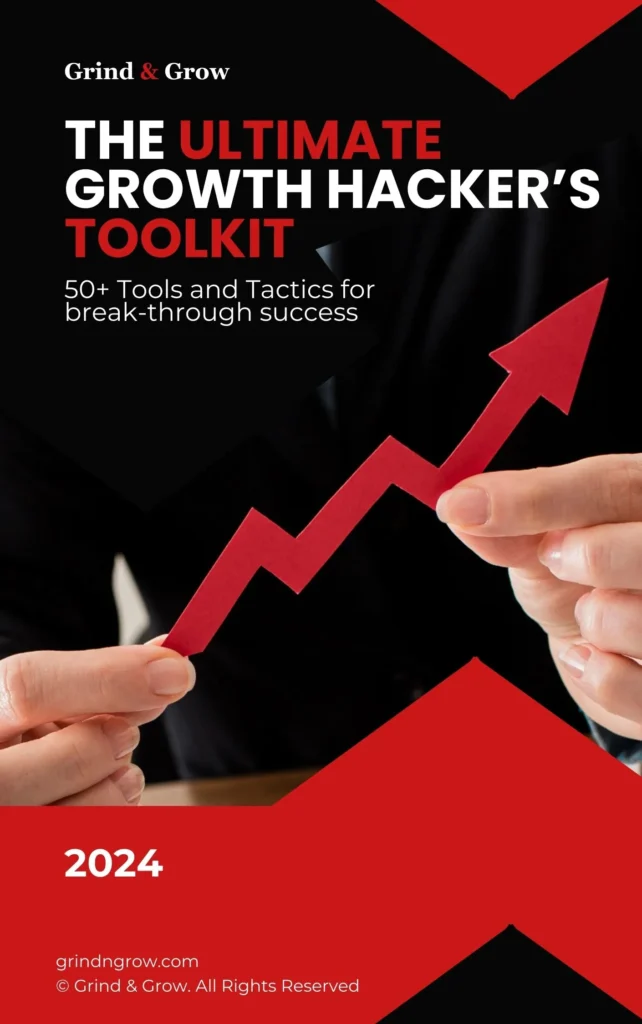Decision Making Framework
At Grind & Grow, we understand the importance of having a reliable decision making framework to drive business success. This article delves into the essential components and strategies to make well-informed decisions that can enhance your company’s growth trajectory.
Understanding Decision Making Frameworks
A decision making framework is a structured approach to tackling choices, enabling businesses to systematically evaluate options and select the most advantageous course of action. These frameworks are crucial because they provide consistency and clarity, ensuring that decisions align with business goals, optimize resource utilization, and mitigate risks.
Rational Decision Making Models
Rational decision making models focus on logical, structured steps to arrive at the best possible decision. This method involves:
- Identifying the problem
- Generating alternative solutions
- Evaluating each alternative
- Selecting the optimal solution
- Implementing and monitoring the chosen solution
For instance, a company deciding on capital investments could utilize a rational model to compare expected returns on various projects, ensuring a data-driven and objective decision.
Intuitive Models
Intuitive models rely on the experience and instincts of decision-makers. These are particularly effective in situations requiring quick decisions or when data is sparse or unavailable. Intuitive models are valuable in dynamic industries such as tech, where executives may need to make rapid decisions based on trends and past experiences. For example, a startup founder might rely on intuition to pivot the business model, basing the decision on market feel and personal insights rather than extensive analysis.
Recognition-Primed Models
Recognition-primed models blend intuition with analysis, where decision-makers recognize patterns from past experiences to inform present choices. This method works well in complex scenarios where quick, yet informed, decisions are necessary. For example, a seasoned project manager might use a recognition-primed model when deciphering potential risks in a new project, drawing on past project setbacks to guide current risk mitigation strategies.
These varied frameworks underscore the adaptability required in business decision-making. Choosing the right model depends on the complexity of the decision, the available data, and the urgency of the situation. In the subsequent chapter, we will delve into the key components that constitute an effective decision making framework, ensuring decisions are both informed and impactful.
Key Components of an Effective Decision Making Framework
Clearly Defined Goals
Establishing clearly defined goals is the cornerstone of an effective decision making framework. Without a precise understanding of what you aim to achieve, it becomes challenging to make decisions that align with your overall business objectives. Clear goals serve as a roadmap, providing direction and ensuring that every decision made is purpose-driven and aligned with the company’s long-term vision.
Data Collection and Analysis
Informed decisions are rooted in accurate and comprehensive data. Collecting relevant data from various sources and rigorously analyzing it can reveal insights that guide smarter, more effective decision making. This involves not only gathering quantitative data such as sales figures and market trends but also qualitative data like customer feedback and employee input. Data analysis helps in identifying patterns, forecasting potential outcomes, and assessing the feasibility of different courses of action.
Stakeholder Input
Including input from stakeholders—such as employees, customers, investors, and partners—ensures that decisions are well-rounded and take into account diverse perspectives. Stakeholder input can highlight potential impact areas that might not be immediately obvious and can help in aligning the decision with the needs and expectations of those affected. Moreover, engaging stakeholders fosters a sense of ownership and commitment to the decision-making process, which can enhance implementation success.
Risk Assessment
Every business decision comes with inherent risks. Conducting a thorough risk assessment allows you to identify potential challenges and uncertainties that could impact the outcome of your decisions. This includes evaluating both internal risks, such as resource allocation and operational risks, and external risks like market volatility and regulatory changes. By understanding these risks upfront, you can develop strategies to mitigate them and prepare contingency plans.
Evaluation of Alternatives
Before committing to a particular decision, it is essential to evaluate all available alternatives. This includes generating multiple options and assessing each against your defined goals, data insights, stakeholder input, and potential risks. Comparative evaluation helps in identifying the most viable and effective solution, ensuring that the chosen path is the best course of action to achieve desired outcomes. This process also promotes creative and critical thinking, which can lead to innovative solutions.
By integrating clearly defined goals, data collection, stakeholder input, risk assessment, and evaluation of alternatives into your decision-making process, you can make more informed and impactful decisions. These components work synergistically to ensure that each choice propels your business forward efficiently and effectively.
Step-by-Step Guide to Implementing Decision-Making Frameworks
Step 1: Assess Your Current Processes
Start by evaluating your existing decision-making processes. Identify the strengths and weaknesses, and note any bottlenecks or areas where decisions are frequently delayed or poorly informed. Understanding your baseline is crucial for tailoring a decision-making framework to your needs.
Step 2: Develop Clear Guidelines and Objectives
Next, create clear guidelines on how decisions should be made within the business. This includes defining objectives, key performance indicators (KPIs), and the roles and responsibilities of each team member within the decision-making process. This step ensures that everyone is on the same page.
Step 3: Train Your Staff
Effective implementation requires that all staff members understand and are comfortable with the decision-making framework. Conduct comprehensive training sessions to educate your team on the new processes, tools, and their individual roles. Training should be ongoing and include refreshers to ensure compliance and efficiency.
Step 4: Integrate into Company Culture
A decision-making framework should be more than just a set of guidelines; it needs to be woven into the company’s culture. Encourage open communication, transparency, and a data-driven mindset. Celebrate successes and learn openly from failures. This cultural shift can make the framework more effective.
Step 5: Utilize Tools and Technologies
Leverage modern tools and technologies to support your decision-making process. Software platforms that offer data analytics, project management, and collaborative decision-making can streamline the process, making it faster and more efficient. Tools like Asana, Trello, or BI software like Tableau can integrate perfectly with your framework.
Case Studies: Real-World Success
For instance, Company A improved its decision-making speed by 40% by implementing data analytics tools and conducting staff training workshops. Company B integrated Trello into its decision-making process, which resulted in a 25% reduction in project turnaround time and better team collaboration. These real-life examples underscore the efficacy of a well-implemented decision-making framework.
Implementing a decision-making framework not only streamlines your processes but also empowers your team to make more informed, timely choices, propelling your business forward.
Key Performance Indicators (KPIs) to Measure Success
One of the most effective ways to assess the success of your decision-making framework is by establishing and analyzing key performance indicators (KPIs). These quantitative measurements offer valuable insights and help businesses identify areas where the framework excels and where it requires improvement.
Decision-Making Speed
In fast-paced business environments, the speed of decision making can significantly impact growth and competitiveness. Assess how quickly decisions are made from inception to conclusion. A faster decision-making process often correlates with an agile and responsive business. Track average time spent on decision-making tasks and strive for continuous reduction without compromising accuracy.
Accuracy of Decisions
Accuracy is crucial to the effectiveness of your decision-making framework. Evaluate how often decisions lead to successful outcomes versus those that result in setbacks or failures. Analyzing these data points can uncover patterns, helping you refine the framework to enhance decision accuracy. Implement an error rate metric to monitor the number and severity of poor decisions over time.
Impact on Business Outcomes
Perhaps the most telling KPI is assessing the direct impact of decisions on business outcomes. This can be measured through various metrics like revenue growth, profitability, market share, and customer satisfaction. Link each significant decision back to its quantifiable impact on the business to gauge its effectiveness.
Strategies for Continuous Improvement
Frameworks should be dynamic and adaptable to changing business landscapes. Here are some strategies to ensure your decision-making process remains effective and up-to-date:
Regular Feedback Collection
Collect feedback from all levels of the organization to understand how the framework is perceived and where it might be failing. Employee surveys, focus groups, and one-on-one meetings can offer valuable insights.
Analyze Measurable Results
Use the data gathered from KPIs to perform a thorough analysis. Look for trends and recurring issues, and use these insights to make necessary adjustments to the framework. Regularly revisiting this data ensures that your framework evolves based on tangible results rather than assumptions.
Technology Integration
Implement modern tools and software to aid in decision making. Whether it’s AI for predictive analytics or CRM systems for real-time data, technology can offer a robust support system to your existing framework. Ensure that these tools are updated to leverage the latest advancements in technology.
Training and Development
Continuous staff training is essential for the successful implementation of any decision-making framework. Regular workshops, courses, and seminars can keep your team proficient in applying the framework and making informed decisions.
By diligently measuring KPIs and adopting strategies for continuous improvement, businesses can ensure their decision-making frameworks are not only effective but also evolve with changing business dynamics.
Common Questions Answered
Q: What is a decision making framework?
A decision making framework is a structured approach used to make well-informed and strategic decisions. It involves various models and components to guide the process.
Q: Why is a decision making framework important for businesses?
A decision making framework helps businesses make consistent, rational, and strategic choices, leading to better outcomes and more efficient growth.
Q: How can I implement a decision making framework in my business?
Implementing a decision making framework involves training staff, integrating the framework into company culture, and using supportive tools and technologies.
Q: How do I measure the success of my decision making framework?
Measure success through key performance indicators (KPIs) such as decision-making speed, accuracy, and impact on business outcomes, and continuously refine the process based on feedback.
Conclusion
Incorporating a robust decision making framework is essential for business growth and efficiency. At Grind & Grow, we provide the insights and tools you need to make well-informed decisions that drive success. By understanding, implementing, and continuously refining your decision making processes, you can propel your business to new heights.
Interested in how you can accelerate the growth of your business? Find more resources like this one to grow your business cost effectively at grindngrow.com, and consider joining our mailing list to get exclusive tips and extraordinary savings on services to grow your business.


